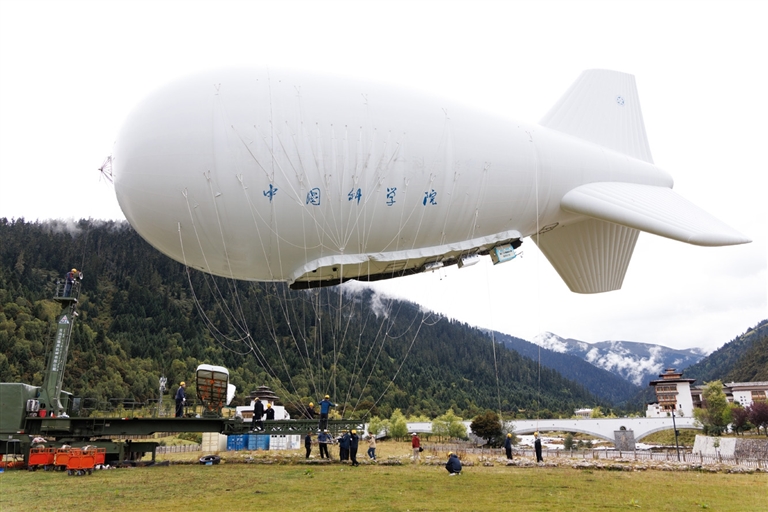
CHINESE scientists have completed a series of tethered‑balloon flights over the Qinghai‑Xizang Plateau, collecting rare high‑altitude atmospheric data in a project they say could enhance weather forecasting. The Aerospace Information Research Institute of the Chinese Academy of Sciences (CAS) announced over the weekend that its Jimu 1 aerostat carried out 30 verification flights in Lunang, Xizang Autonomous Region, between Aug. 12 and Sept. 19. In collaboration with the Institute of Qinghai‑Xizang Plateau Research, the team measured atmospheric composition, pollutant distribution and three‑dimensional cloud microphysics at multiple altitudes and under varying weather conditions. Zhang Taihua, a senior engineer at the Aerospace Information Research Institute and the project lead, said the tethered balloon carried 16 types of scientific payloads, totaling about 200 kilograms across three major categories, and ascended to 5,500 meters above sea level. “Through coordinated multi‑payload observations, the experiment marked a technological leap from single‑point sampling to three‑dimensional monitoring, laying a foundation for dynamic observation and sustainable development on the Qinghai‑Xizang Plateau and in other regions sensitive to global climate change,” Zhang said. A tethered balloon is a lighter‑than‑air craft that generates lift by a gas — typically helium — that is less dense than the surrounding air. Predating the airplane, tethered balloons are among the earliest types of aerospace vehicles and remain useful for atmospheric observation, the research team noted. He Zeqing, another senior engineer at the institute, highlighted the advantages of tethered balloons: long endurance, wide coverage, flexible deployment, substantial payload capacity and relatively low operational cost. “These features make them highly competitive and, in many applications, irreplaceable compared with other types of aircraft,” He said, adding that the Jimu 1 has become a benchmark product reflecting China’s independent innovation in airship‑based observation. Since 2017, the Jimu 1 aerostat has participated in systematic scientific expeditions across the plateau, conducting observations in Lunang, Namtso Lake, Mount Qomolangma and Tsonyi County in Xizang, as well as in Hoh Xil in Qinghai Province and in the Tashkurgan area of the Xinjiang Uygur Autonomous Region. During a 2022 expedition, Jimu 1 set a world record by ascending to 9,050 meters — higher than Mount Qomolangma’s summit. Accurate forecasting of rainfall — particularly the location and amount of extreme precipitation — has become a pressing public concern as extreme rainfall events occur more frequently in recent years. Shang Huazhe, an associate researcher at the institute, said that predicting rainfall amounts remains the most difficult aspect of forecasting extreme events. “Sometimes rainfall totals exceed both our prior understanding and the estimates produced by current forecasting models. Such events compel us to deepen our knowledge of natural conditions, which in turn helps address challenges in rainfall prediction,” he said. Shang explained that clouds over high‑altitude regions tend to have shorter life cycles, developing and dissipating more rapidly than clouds at lower elevations. “By measuring the distribution of microphysical properties at the cloud base, within the cloud and at the cloud top, and by characterizing clouds at different life stages, researchers can obtain data that improve the parameterization schemes in existing weather‑forecast models,” he said. “This is of great significance for more accurately predicting where and how much rain will fall.”(SD-Agencies) | 
